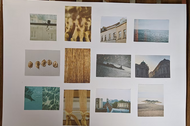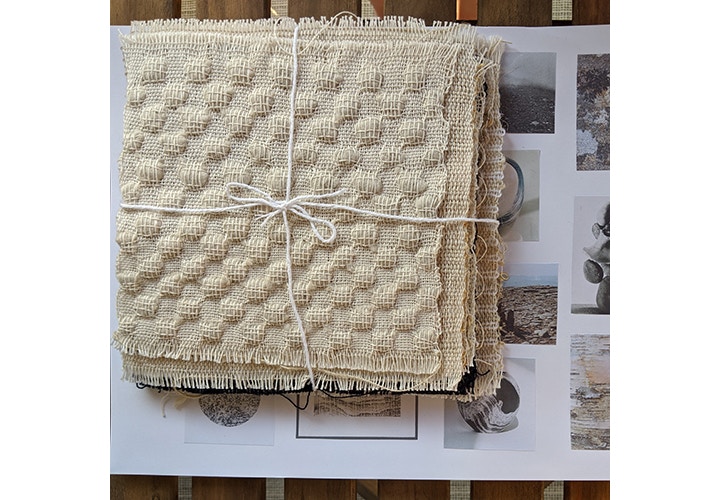The Sketchbook Collective 2020: Artist Interviews Part 2
Posted by Cass Art on 5th Sep 2020
The Manchester School of Art Sketchbook Collective will be exhibiting alongside the 2020 Degree Show, a showcase of students, staff, schools, and teachers’ sketchbooks in an exciting and dynamic virtual display. The Sketchbook Prize celebrates and accentuates processes undertaken by each individual in the show, it highlights the methodologies, innovative ideas, the importance of process, experimentation, discovery and development and aims to evoke further thoughts, possibilities and generate responses from visitors to the shows. Founded in 2017 by a collective of multi-disciplinary international MA students at Manchester School of Art, the Sketchbook Prize offers a creative platform for designers, artists, architects, and makers to display their thinking process.
We're catching up with the prizewinners from this years exhibition, including some special Cass Art Special Mention winners which really caught our eye!
CASS ART SPECIAL MENTION, YVE SLATER
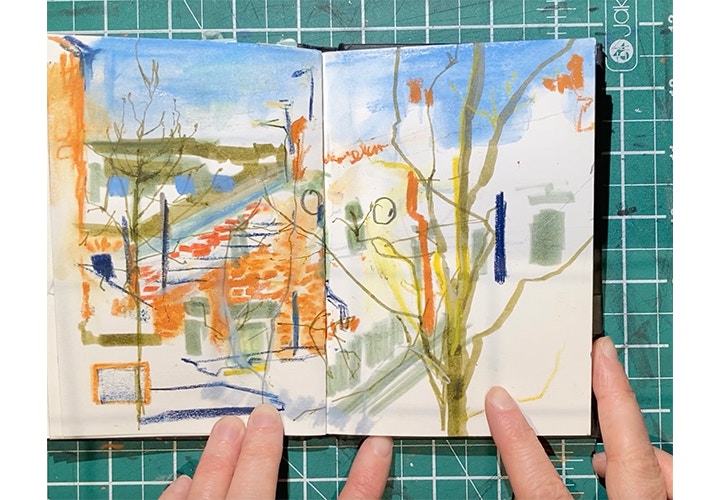
Yve Slater is a 2020 Illustration with Animation graduate from Manchester School of Art. Yve’s practice focuses on colour, shapes and composition. Yve is drawn to visual expression with an interest in environmental sustainability.
Entering her sketchbook to the Sketchbook Collective Prize 2020, Yve has gained the Cass Art Special Mention.
About her submission, Yve says: as a predominantly observational drawer, I tend to carry a sketchbook most places, plonking myself down and drawing snippets of my surroundings. I’m happiest doing this with coffee and a slice of cake as I get very hangry.
Firstly Yve, what’s the most important thing about keeping a sketchbook?
I think it’s partly documentation. I use them almost like a diary, most places I go I will do a quick sketch and write something next to it, which is quite nice to look back on, especially when travelling. They are also a safe space to try things out really quickly. I used to be quite precious about sketchbooks but now they are quite free and a bit messy, an amalgamation of drawings, colour palettes, notes and lots of half drawings. I love the fact that if something isn’t working, or you aren’t getting on with a drawing you can just turn the page and leave it be.
This has been an extraordinary time for art and design graduates. Away from University facilities, how has lockdown impacted your practice and has keeping a sketchbook been helpful in the last few months?
In all honestly, I haven’t picked up my sketchbook for a while. As I enjoy exploring and drawing new places, I’ve found being at home massively uninspiring. I think finishing off my degree led to a level of burnout, so I needed a bit of a break. I have however been painting pottery, so have been using my sketchbooks from the past year as a source of inspiration.
How are you dealing with being a graduate in the current times?
Well, it’s been a really strange way to end a degree, especially a creative one as you lose your studio space, access to workshops and in my case the ability to draw on location. It has definitely been hard, and I lost my creativity for a while, but I think I’m slowly finding it again. Drawing takes, a while to get back into when you’ve had a break, a little like going to the gym, you lose a bit of muscle definition and need to build up your fitness again.
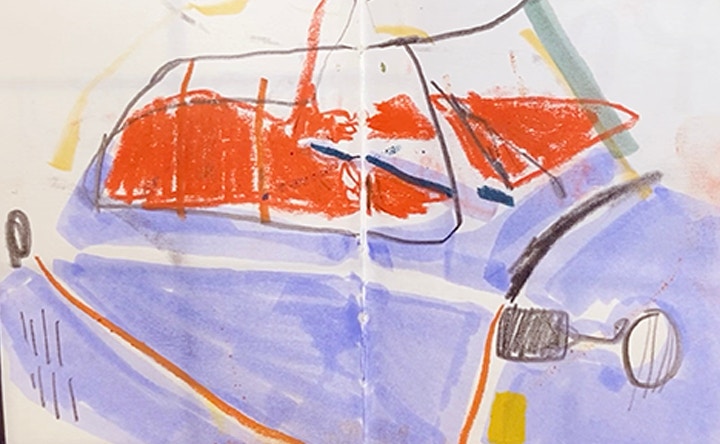
What led you to enter to the Sketchbook Collection and prize?
I entered it in my first year of university as I became a bit of an avid ‘sketchbooker’ and think it’s interesting to see how others approach a sketchbook.
What materials do you tend to experiment within your practice, and how do the materials you use in your sketchbook differ to those outside of it?
I LOVE crayons, more specifically the Caran D’Ache ones. As mine are all in a pencil case together they are usually really grubby and broken, but they work! I sometimes carry around a role of masking tape with me as I quite like making the crayons with a bit of collage.
And finally, are there any brands that you love to use?
When I’m at home with my parents, I go to Seawhites (you might have seen the brand at your local art shop) as they have a discounted section at the back with all the misprinted sketchbooks. My favourite though (I think...) is the Daler Rowney A6 hardback sketchbooks as they are super chunky so you can fill them with a lot of drawings!
To view Yve’s full submission at the Sketchbook Collective Prize 2020, visit: https://inprogress.mmu.ac.uk/yve-slater/
Alice’s website and Instagram:
https://www.instagram.com/yveslater/
THINKING IN A SKETCHBOOK HIGHLY COMMENDED, ELSA KRAWIELITZI
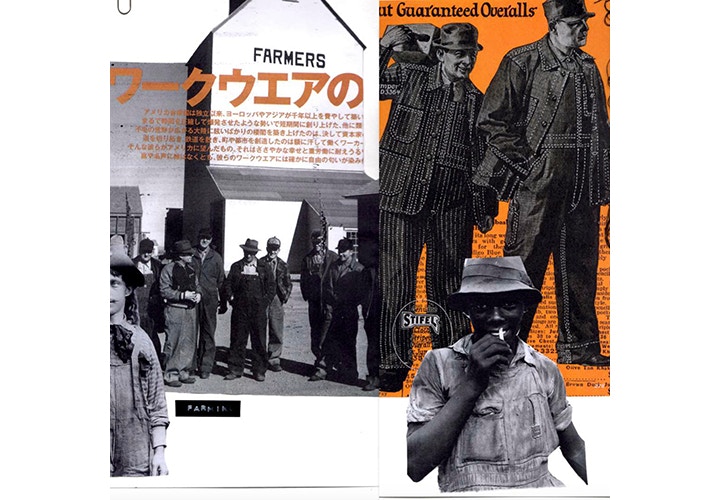
Elsa Krawielitzki is a student at the Manchester Fashion Institute, Manchester Metropolitan University. Elsa’s practice explores fashion workwear from Western an East-Asian farming, researching structure and elements of work attire from contrasting cultures.
Elsa’s sketchbook has been Highly Commended in the Thinking in a Sketchbook category.
About her sketchbook, Elsa says: my sketchbook explores workwear from western and East-Asian farming. My research, from a fashion design perspective, is a study of the structure and elements of work attire from two contrasting cultures and combining the properties that inspired a final garment. Through-out this process, I kept the Morden day consumer in mind to create industry-inspired outcomes and build up my brand identity.
Firstly Elsa, what’s the most important thing about keeping a sketchbook?
For me, having a sketchbook is important because I treat it as a visual journal that is constantly inspiring me during my creative practice. When I go through a fashion design process, the sketchbook is the most fundamental part leading up to the creation of my garments. It serves as a space where I can document and develop work from initial ideas to final outcomes and be able to have it all in one place.
This has been an extraordinary time art and design students. Away from University facilities, how has lockdown impacted your practice and has keeping a sketchbook been helpful in the last few months?
Going into lockdown was quite stressful at the beginning as it disrupted my creative focus. So, when I was able to refer back to my sketchbook, I was able to reconnect with my workflow. For this, I’m grateful to have had my sketchbook to look back at to remind myself of my initial ideas and inspiration. It was tough during lockdown not being able to access the University’s facilities. This meant I needed to make the most of the resources I had at home. It really challenged my ability to think outside the box and experiment with things I wouldn't usually use. For example, having the fabric shops closed due to COVID-19, I saw my old clothes as an opportunity to use as a source of fabric that I could incorporate into my project.
How are you dealing with being a student in the current times?
Being a student during these times has certainly been eye-opening, especially for those creating physical outcomes as part of their practice. Submitting work online can feel restrictive due to the difference in engagement when viewing work on a computer screen, however, it has forced me to adapt as a designer and work in ways which I had not done previously.
What led you to enter to the Sketchbook Collection and prize?
I thought the Sketchbook Collective was a great way to get my work out there and be involved in a platform that's shared with a variety of artists and designers.
What materials do you tend to experiment within your practice, and how do the materials you use in your sketchbook differ to those outside of it?
Initially, I’ll create a lot of collages and drawings when researching possible design routes. I’ll then begin to work with fabrics and sampling details from garments, alongside finalizing my final designs with illustrations and further collages. The work I do outside my sketchbook is where I bring my ideas to life into physical, wearable garments.
And finally, are there any brands that you love to use?
I am in love with Faber-Castell Pitt artist’s pen! I use these when doing quick sketching as they move so well on paper. I’m also guilty of owning a fair few Winsor and Newton Promarkers. They're great when I want to add a pop of colour to my illustrations as they blend well and are easy to use.
To view Elsa’s full submission at the Sketchbook Collective Prize 2020, visit: https://inprogress.mmu.ac.uk/elsa-krawielitzki/
Elsa’s Instagram:
https://www.instagram.com/elsa_krav/
THINKING IN A SKETCHBOOK HIGHLY COMMENDED, MOLLY PILKINGTON
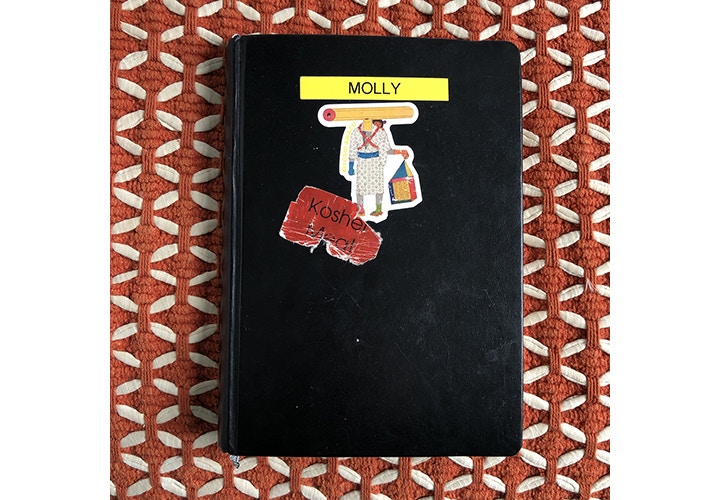
Molly Pilkington is an Illustration with Animation Manchester School of Art 2020 graduate. Molly’s work consists of a combination of traditional illustration mediums that include collage, gouache, watercolour and inks. Molly utilises these methods to create a playful approach to an array of archival resources. These archives offer a vast amount of history and narratives to explore with the aid of the local community's input.
Molly’s sketchbook has been Highly Commended in the Thinking in a Sketchbook category.
About her sketchbook, Molly says: The sketchbooks I have submitted were resources used to create imagery around greyhound racing and the links which my family have to these dogs. They focus on exploring Belle Vue Racecourse in Manchester and celebrate its changing history as it faces closure.
Firstly Molly, what’s the most important thing about keeping a sketchbook?
I’ve found out from my various trial and error that my practice really centres around keeping a sketchbook. Having my ideas and illustrations contained in one place allows me to review and develop ideas that need more work outside of the sketchbook constraints.
Plus working in this way means that more developed pieces can seamlessly sit alongside a scribbly doodle which makes the illustration process a lot less daunting.
This has been an extraordinary time art and design graduates. Away from University facilities, how has lockdown impacted your practice and has keeping a sketchbook been helpful in the last few months?
Lockdown has really slowed my practice down lately. I’ve finally began to pick back up where I left off and my sketchbook has really helped with this. Carrying around a smaller sketchbook especially helps me as a mind dump for any ideas going on. Now I’m feeling more in the creative mood, I’ve got this collection of sketches and notes collected together so that I can pick back up where I left off.
It's quite strange being a graduate at this time. Ending university so abruptly felt like I hadn’t really graduated at all. I feel that the best thing to do in these times is to try and stay involved and support what other graduates are producing and participating in. While also trying to maintain my own practice and continue producing work, while also not being so hard on myself.
What led you to enter the Sketchbook Collection and prize?
Over the past couple of years at university I made sure I looked at the Sketchbook Collection during the degree show. I really enjoyed being able to look more in depth at how graduates had reached final outcomes for their degree work. I’m generally quite nosy as to other people’s practice so being allowed to have a look in is a really nice idea. I felt that entering in my own sketchbooks would give people more of a sense of who I am and how my practice works.
What materials do you tend to experiment within your practice, and how do the materials you use in your sketchbook differ to those outside of it?
Generally, I tend to use a lot of watercolour, gouache, ink and various collage in my work. Which doesn’t really differ from how I work outside of my sketchbook. Using a variety of mediums allows me to scan in textures, colours and other elements to be brought together digitally for a more finalised image, which is the only point that I really put the sketchbook down.
And finally, are there any brands that you love to use?
I tend to stick to quite accessible materials so using own brand materials as well as brands such as Winsor and Newton, Faber-Castell, Derwent gives me more than enough material to work with for my illustrations.
To view Molly’s full submission at the Sketchbook Collective Prize 2020, visit: https://inprogress.mmu.ac.uk/molly-pilkington/
Molly’s website and Instagram:
https://mollypilkington.co.uk/
https://www.instagram.com/mollypilkington/
THE ‘LEAST’ SKETCHBOOK SKETCHBOOK HIGHLY COMMENDED, AMEERAH DAWOOD
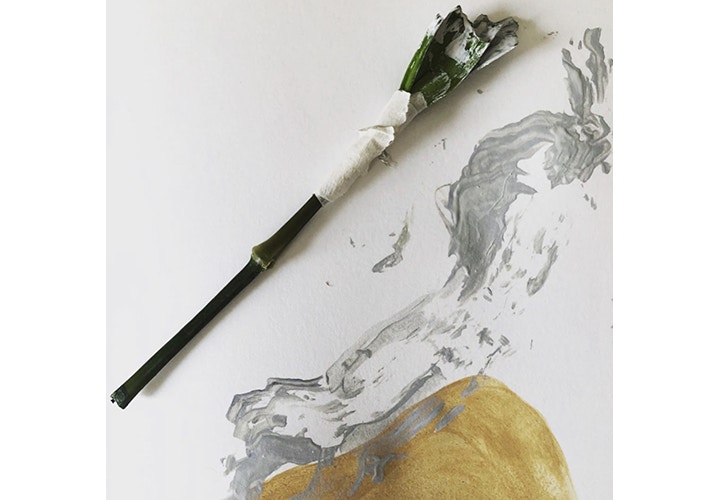
Ameerah Dawood is 2020 Manchester School of Art abstract artist that uses her skills in print design and painting to create her interpretation of natural environments. As a Printed Textile Design graduate from Manchester School of Art, she has experimented with many exciting ways of using colour, texture and mark to display energy and emotion through her work.
Ameerah has won the first prize in the Sketchbook as an Art piece category and been Highly Commended in the ‘Least’ Sketchbook Sketchbook category.
About her submission to the Sketchbook Collective Prize, Ameerah says: my work is centred around the belief that the reason we feel so at peace around nature is because we are a part of it. These digital drawings aim to translate the calming aspect of these environments into abstract art pieces, ones in which anyone can find themselves able to indulge in a meditative moment.
This digital sketchbook beautifully displays the correlation between sound/movement in the natural environment and the colour and abstract mark-making choices I have made. The footage is my own, filmed in natural environments close to my heart. The painterly digital drawings are a by-product of meditative observation, listening and responding to this footage.
I hope that by watching this, you may also indulge in a meditative, calming moment.
Firstly Ameerah, what’s the most important thing about keeping a sketchbook?
I firmly believe that a “Finished Work” is nothing without it’s backstory. The sketchbook contains the often-turbulent journey of experimentation and discovery, which is why I often find them more interesting than a finished piece on its own. I’m always intrigued to know more about how an artist arrived at their final idea, what inspired them to reach this finale and that is why I feel it’s so important to keep a sketchbook. But a sketchbook is personal and unique. There is no correct medium and way to record ideas, making the sketchbooks artworks in their own right.
This has been an extraordinary time art and design students. Away from University facilities, how has lockdown impacted your practice and has keeping a sketchbook been helpful in the last few months?
My work is centred around the philosophical depths of the natural world. I seek out unseen concepts within it to find the many invisible ways in which nature displays a connection between us and it. My work acts as an abstract, often minimal reminder of this connection, one I feel humanity has drifted so far away from in these past years. Lockdown has only highlighted the importance of reconnecting with nature. The benefits both physical and mental of being in natural surroundings, for even one walk a day have never been more vital than of now. This has only fuelled my ambitions to use my artwork as a reminder not to become too lost in the metropolis of modern life and to take solace in that which we derived from. Essentially bringing the outside, inside.
Since being unable to access a studio I have turned to more digital ways of sketching. Through Procreate I have been able to digitally create abstract works whilst simultaneously responding to my subject matter, which in this case has been the sounds of natural environments I recorded. E.g. Flowing water, birds, wind rustling through trees. I decided to show this correlation between sketch and sound through film, by piecing together a time-lapse of my sketches and the corresponding scenes to create a ‘digital sketchbook’. Through this experiment, I discovered the piece itself became an artwork in its own right.
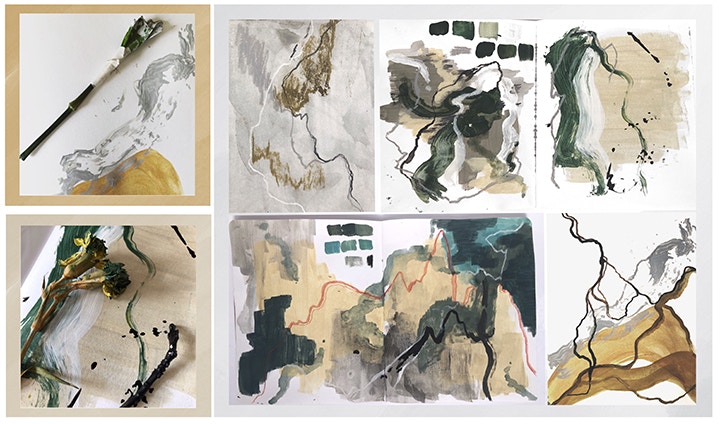
How are you dealing with being a graduate in the current times?
I’ve come to terms with the fact that I need to let go of the reigns for a little while. I struggle with anxiety a lot so graduating from a creative degree with the aspiration of becoming a freelance artist was always going to be tricky, let alone in a pandemic. The main thing I’ve allowed myself to do is to feel everything. If I feel down and have no motivation for a week I roll with it, if I feel the urge to start painting at 1am I roll with it, If I feel the need to rapidly apply for jobs and look for new places I could live I roll with it. Essentially taking each day as it comes for now is serving me and my mental health well. Gratitude is also something I continue to practice, being grateful for my health and that I have a comfortable place to live in these times allows me to tame my worrying mind.
What led you to enter to the Sketchbook Collection and prize?
Initially I didn’t have much of a traditional “sketchbook” because a lot of my work was digital. However, once I created my film piece to show the correlation between sketch and sound in a digital way (because there was no longer a physical submission), I could see how it showed my preliminary work but became an art piece that could be viewed on its own. This prompted me to enter the “Sketchbook as an Art Piece’ Category as I felt it was really strong in that aspect.
What materials do you tend to experiment within your practice, and how do the materials you use in your sketchbook differ to those outside of it?
If I’m working on paper or canvas, I use a variety of media to get different textures and lines. I often use acrylic paint; Ink, Posca pens, charcoal sticks, soft and oil pastels and my favourite Faber Castell coloured pencils. I tend to find tools like twigs, flowers and sticks that I can use instead of traditional brushes. I love to incorporate screen printing into my work as well! I use my physical sketchbooks to plan out bigger pieces and to see what mediums go together well.
I like my digital prints to also have a similar feel, so I often use an array of different brush styles and techniques to achieve this, but I also respect that it’s a different form of working. My digital prints are often a lot busier than my physical pieces because I can afford to make as many mistakes as I like.
And finally, are there any brands that you love to use?
I like to play with all sorts of tools, whatever brand or quality but there are definitely some that I stick to. I love to use the Cass Art Acrylic paints in my work. They’re great quality but also affordable which is great for me as I use acrylic for everything. Sennelier Oil Pastels are DEFINITELY worth a splurge if oil pastels are something you use often. They’re so pigmented, smooth and creamy. I’ve had mine for years! Posca is also a brand that I love. I often use these for extra linear detail. The paint pens are so liquid and pigmented that they’re so much fun to use!
To view Ameerah’s full submission at the Sketchbook Collective Prize 2020, visit: https://inprogress.mmu.ac.uk/ameerah-dawood-2/
Ameerah’s website and Instagram:
https://www.instagram.com/ameerah.dawood.design/
WORKING IN 3D HIGHLY COMMENDED, ELEANOR WALKER
Eleanor Walker is a Textiles student from Manchester School of Art and her practice particularly focuses on slow textiles, nature and weaving.
Eleanor’s sketchbooks submissions have been Highly Commended in the Working in 3D category.
About her submission to the Sketchbook Collective Prize, Eleanor says: I work in a traditional sketchbook, but I also work in weavings. These are samples all stemming from one idea, but they have influences from Japanese concepts like Kintsugi and Wabi-Sabi. They represent a journey; I still have a lot to learn about weaving so every piece I make is a new adventure. With weaving it’s all about everything. Texture, colour, pattern, composition, weight, feel simplicity vs complexity.
1. This collection focuses on texture and minimal colour, I used natural fibres like soft brushed cotton and scratchy linen, thick fluffy silk and nubbly silk noil (bourette). I work intuitively on the loom, my ideas begin on paper but through weaving, they take a new shape in a three-dimensional form.
2. This collection is all about sunlight and reflections, and for that, I used shiny mercerised cotton, combined with luminous silk, next to soft dark brushed cotton for contrast. I work intuitively on the loom, my ideas begin on paper but through weaving, they take a new shape in a three-dimensional form.
Firstly Eleanor, what’s the most important thing about keeping a sketchbook?
I like to document my thoughts in a traditional sketchbook, but I also work in 3D documenting my thoughts through the traditional craft of weaving. Weaving can be very complex and it’s all about discovery, learning and finding new techniques. So, to weave is to keep my mind active and healthy, and to keep my creativity flowing.
This has been an extraordinary time art and design students. Away from University facilities, how has lockdown impacted your practice and has keeping a sketchbook been helpful in the last few months?
I actually got on really well with lockdown, I bought myself a loom (I had been wanting one for a while and lockdown was the push I needed) and started weaving. Not for a project or a brief, but just for myself. Not having to worry about University and time constraints I have been able to explore different techniques and not be afraid of failing. I think keeping a documentation of this development has been useful and will be good to look back at in the future even if it's just to show that despite the strange and stressful time, growth is still (always) possible.
For me, being a second year Uni student is one of the best things I could have been right now. Not too many financial worries because of our student loan, plenty of spare time to work on perfecting my craft for when I return in my third year, and lots of support from tutors on the ‘third term’. This freedom and spare time actually led to a project I did with the third term called ‘Arts for Wellbeing’ where I have created small environmentally friendly signs that label plants around Ancoats and the Ashton Canal (Manchester). I document them on a ‘plants and wellbeing’ Instagram called @jardin.de.lenore where I hope to inspire people to take notice of their surroundings, learn something new and in turn improve their mental health and wellbeing.
What led you to enter the Sketchbook Collection and prize?
I never enter anything where I submit my work, but I have been changing so much recently and gaining a lot of confidence thanks to some wonderful tutors and friends at University and taking part in an amazing organisation called the National Saturday Club which facilitates free workshops in art, science and architecture to 13-16 year olds. Entering this competition was just another step in being more confident about myself and my work.
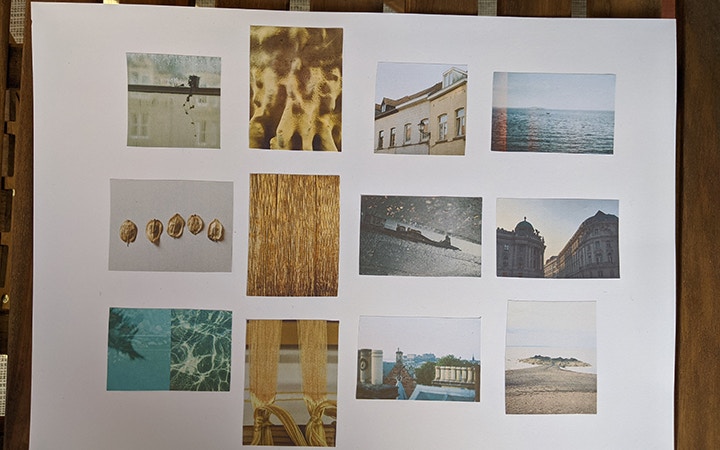
What materials do you tend to experiment within your practice, and how do the materials you use in your sketchbook differ to those outside of it?
I only use natural materials in my weaving because they always feel so much better, I love the nubby qualities of cotton, but also how it can be so soft, or so shiny. I like to contrast this with paper yarn or tussah silk. Strangely as a textile student and artist I don’t use much wool as I find it very itchy and unpleasant to work with! Outside of weaving, for drawing and painting I love charcoal, inks, gouache, and watercolours. I like oil paint too but it’s very slow drying and I prefer to work quickly.
And finally, are there any brands that you love to use?
For yarns I use Uppingham Yarns, Yeoman Yarns, Wool and the Gang for knitting and second-hand yarns from charity shops. For weaving supplies I can always rely on Weft Blown. I love Moleskine for sketchbooks and notebooks, Lamy for the safari fountain pen and Winsor & Newton for watercolour/ gouache paints.
To view Eleanor’s full submission at the Sketchbook Collective Prize 2020, visit: https://inprogress.mmu.ac.uk/eleanor-walker/
Eleanor’s Instagram:
https://www.instagram.com/eleanorsofia_/
Feeling Inspired?
Want to create your own sketchbook? Shop online or in-store for everything you'll need. Don't forget to hashtag #cassart on social media to show us your creations.
